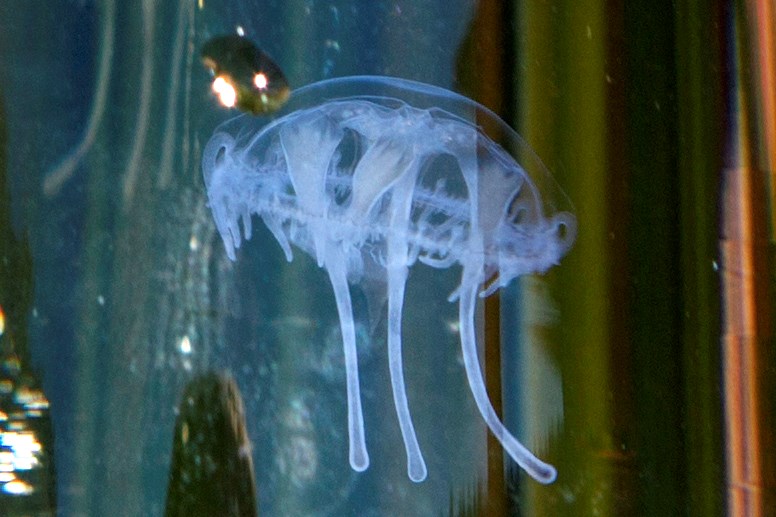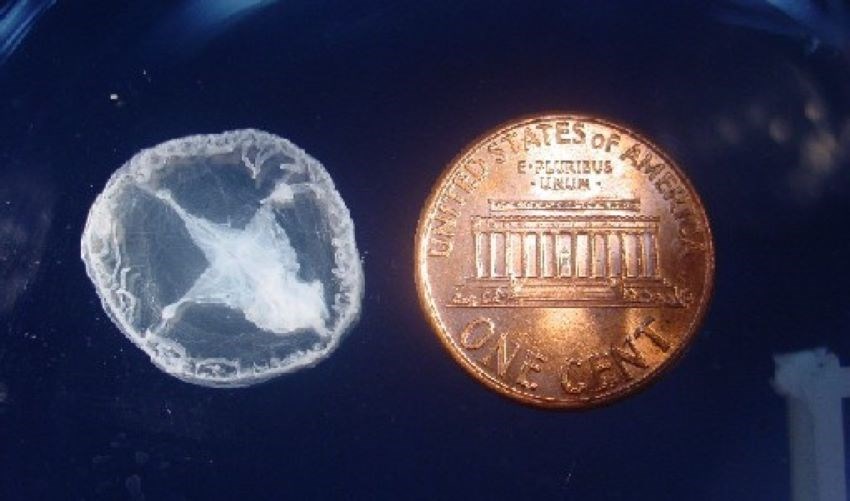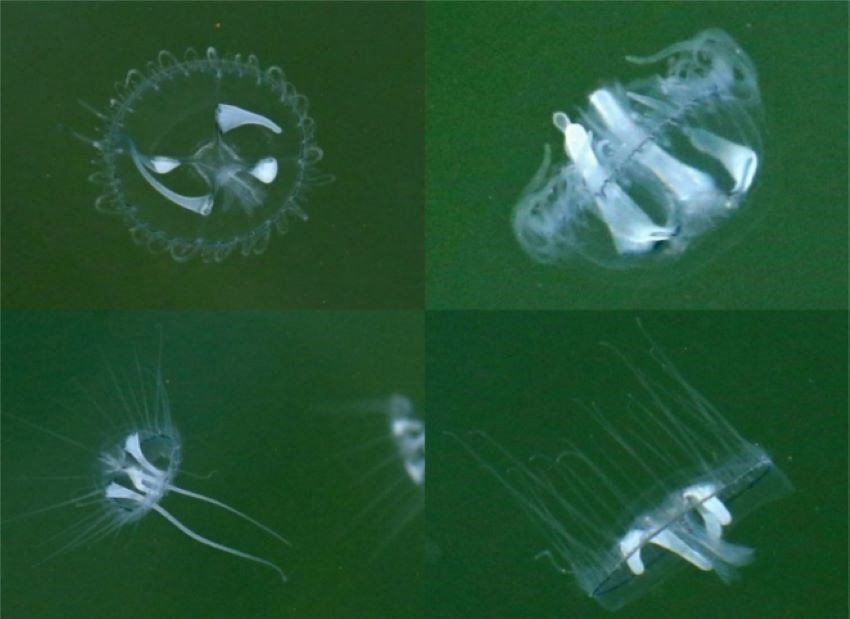Last updated: September 19, 2024
Article
Freshwater Jellyfish

USGS/Dave Head
A Mysterious Presence in Our Waterways
NPS collaborators monitoring macroinvertebrates in National Capital Region (NCR) park streams recently detected an unusual organism: a freshwater jellyfish. Exotic sounding and easy to overlook, these jellies have been observed in North America since the early 1900s.
Craspedacusta sowerbii, also known as the peach blossom jellyfish, is the only known species of freshwater jellyfish. They are no bigger than a quarter, are harmless to humans, and have expanded into many North American freshwater systems, yet little is known about them.
Understanding Freshwater Jellyfish

USGS/Myriah Richerson
Peach-blossom jellies are a non-native species found across North America in slow moving streams, larger river systems, lakes and ponds, and artificial water bodies. They are native to the Yangtze River in China, where they are adapted to variable water conditions. Some speculate they came here along with imported aquatic ornamental plants.
Field monitoring from 2019–2022 by University of Maryland Center for Environmental Science collaborators using environmental DNA sampling produced preliminary evidence of freshwater jellyfish in all NCR parks.
Biology of Jellies
Freshwater jellyfish are not actually fish. Instead they are cnidarians, a group that also includes sea urchins and sea stars. These jellies can be recognized by their characteristic flattened bell-shaped body, four longer tentacles and various smaller tentacles. They are usually between 5-25 mm in diameter and can have up to 500 tentacles in total! While this adult stage, also known as the “medusa”, is the easiest to recognize, jellyfish have a complex lifecycle where they take several different forms that can be vastly different in appearance and behavior.

Smithsonian Ocean Portal
How They Fit In
Freshwater jellies are widespread, but not well understood. Like marine jellyfish, C. sowerbii are opportunistic predators, eating small organisms like zooplankton and small insects that wander into the reach of their tentacles. While C. sowerbii have the capacity to feed on fish eggs and other macroinvertebrate species, scientists have not observed jellyfish as a significant predator on these groups.

USGS/Dave Head
Macroinvertebrates and Freshwater Systems
Freshwater jellies are aquatic macroinvertebrates, which are small aquatic animals without backbones that are visible to the naked eye. This group includes insects, snails, crayfish, worms, mussels, and other common freshwater critters.
Many fish, amphibians, reptiles, birds, and mammals include aquatic macroinvertebrates in their diet. Some are important indicators of water quality, and their presence, abundance, and diversity reflect the overall condition of the water body. Aquatic macroinvertebrates also contribute significantly to nutrient cycling, both consuming and breaking down waste within the food web.
NCR streams contain a wide variety of freshwater macroinvertebrate species that are tracked by long-term monitoring by the NCR Inventory & Monitoring Network. Some of the more unusual species besides these jellyfish include freshwater mussels and freshwater sponges. Understanding and monitoring aquatic macroinvertebrates is an important part of park management and conservation efforts.
Further Reading
- Light, Grosholz and Moyle. 2005. Smithsonian Environmental Research Center. Craspedacusta sowerbii.
- McKercher, E., O; Connell, D., Fuller, P., Liebig, J., Larson, J., Makled, T.H., Fusaro, A., and Daniel, W.M. 2024. U.S. Geological Survey. Craspedacusta sowerbii Lankester, 1880.
- USGS. Freshwater jellyfish (Craspedacusta sowerbii) - Species Profile (usgs.gov)
Tags
- antietam national battlefield
- catoctin mountain park
- chesapeake & ohio canal national historical park
- george washington memorial parkway
- harpers ferry national historical park
- manassas national battlefield park
- monocacy national battlefield
- national capital parks-east
- prince william forest park
- rock creek park
- wolf trap national park for the performing arts
- nature
- ncrn
- ncrn im
- im
- freshwater
- jellyfish
- water
- macroinvertebrates
- freshwater jellyfish
- edna
- stream monitoring
- nonnative species
- cnidarian
- stream biota
- ncr
